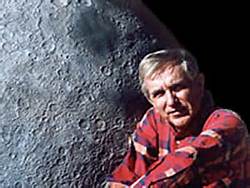2013 Shoemaker Award to Bill Hartmann
 Congratulations to LPL alumnus (1966) William K. Hartmann, recipient of the 2013 Shoemaker Distinguished Lunar Scientist Award. Bill is Senior Scientist at the Planetary Science Institute in Tucson. The press release for the Shoemaker award describes some of Bill's many distinguished accomplishments:
Congratulations to LPL alumnus (1966) William K. Hartmann, recipient of the 2013 Shoemaker Distinguished Lunar Scientist Award. Bill is Senior Scientist at the Planetary Science Institute in Tucson. The press release for the Shoemaker award describes some of Bill's many distinguished accomplishments:
Bill Hartmann Receives 2013 Shoemaker Distinguished Lunar Scientist Award
The new Solar System Exploration Research Virtual Institute (SSERVI)—formerly the NASA Lunar Science Institute—presented Bill Hartmann with the annual Shoemaker Distinguished Lunar Scientist Award at the 2013 virtual Lunar Science Forum, held July 16-18, 2013 from NASA Ames Research Center.
The Shoemaker Distinguished Lunar Scientist Award is an annual award given to a scientist who has significantly contributed to the field of Lunar Science throughout the course of their scientific career. The first Distinguished Lunar Scientist Award was given posthumously to Dr. Gene Shoemaker and presented to his wife Carolyn for his many contributions to the lunar geological sciences. The award was subsequently named after Dr. Shoemaker and includes a medal with the Shakespearian quote “And he will make the face of heaven so fine, that all the world will be in love with night.” Last year’s Shoemaker award was presented to Stuart Ross Taylor.
“In view of his many fundamental and far-reaching breakthroughs in lunar science such as his discovery of multi-ring impact basins—including Orientale basin—Dr. Hartmann is exceptionally deserving of this medal,” said Yvonne Pendleton, director of the Institute. “We are proud to present him with this honor.”
Bill Hartmann is an internationally known scientist, painter, and writer, and winner of the first Carl Sagan Medal from the American Astronomical Society. A former graduate student of Gerard Kuiper, he holds a Ph.D. in Astronomy and M.S. in Geology, both from the University of Arizona, and a B.S. in Physics from Pennsylvania State University. Bill discovered multi-ring impact basins with concentric and radial structure on the Moon, including the Orientale basin on the east limb of the Moon. In 1965 he used crater counts on the Moon and Earth to successfully predict the age of lunar lava plains at 3.6 x 109 years; the date was confirmed five years later with Apollo samples from the Moon. He was lead author, with D. R. Davis, of what has become the most widely accepted theory of the origin of the moon, by impact of giant planetesimal at the end of the planet-forming era. Bill has researched Mars extensively as well. He served as a Co-Investigator on the Mariner 9 mission, which first mapped Mars in detail. With Bruce Murray, Carl Sagan, and others on the imaging team, he discovered Mars' dry river channels, volcanoes, and other features. He currently serves on the Mars Global Surveyor imaging team.
Bill worked with Dale Cruikshank, David Tholen, and others to recognize that comets have similar black surface materials (4% reflectivity) to those on outer solar system asteroids. This research also yielded proof that Trojan asteroid 624 Hektor was one of the largest highly elongated bodies in the solar system, and the discovery that "asteroid" 2060 Chiron had erupted and turned into a comet. This work recognized that comets and asteroids could no longer be considered as independently as had been previously thought. Asteroid 3341 was named after him.
Bill is an internationally recognized painter of space art. Arthur C. Clarke wrote "I consider him to be the direct successor of the late, great Chesley Bonestell," the father of space art. Hartmann’s astronomical paintings have been published in magazines ranging from Natural History, Smithsonian, and Astronomy in the U.S. to the London Economist and other magazines in Japan, Russia, France, Germany, England, and Italy. They have also been shown in exhibitions in New York City, Berkeley, Pasadena, Hawaii, and the National Air and Space Museum in Washington DC, as well as internationally in Moscow, Montreux, Yalta, and elsewhere, and are in collections the U.S., Paris, and Moscow. They have also been used to illustrate books by Carl Sagan and other authors, as well as his own books on astronomical and space themes. Bill was commissioned twice to create paintings for the NASA Fine Arts Program (Galileo space probe launch and Mars Observer Mission), and had two paintings flown on the Russian Space Station, Mir, in 1992.
A prolific writer, he has authored three widely-used textbooks on astronomy, and also co-authored and co-illustrated five pictoral books of space art. He has written two novels and published two books sharing his love of western deserts. His immensely successful “A Traveler’s Guide to Mars” sold out its first 30,000 copies and went into a second printing within two months. In 1992-95 he headed an effort for the Planetary Society and National Science Teachers Association to incorporate planetary science materials into the grade 6-12 curriculum. His book of lessons, "Craters!" was published in 1995 by the NSTA.
For more information visit: sservi.nasa.gov/shoemaker

